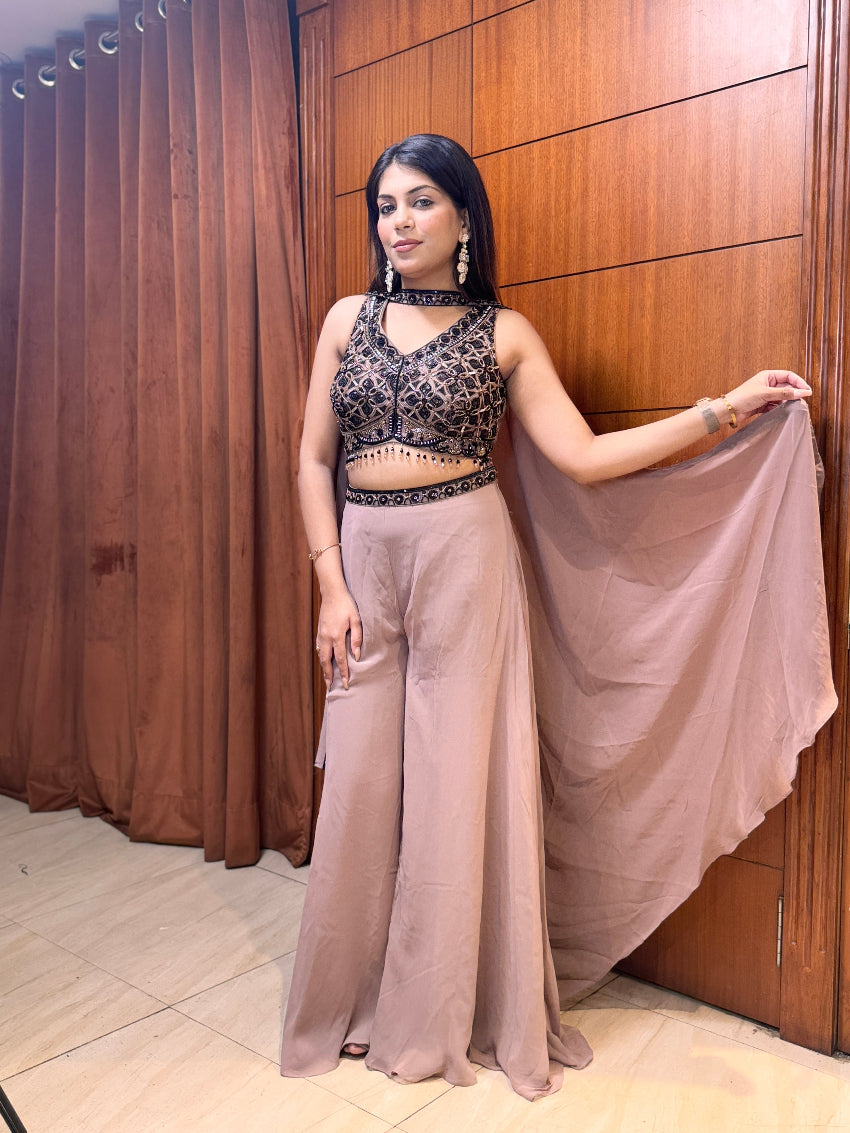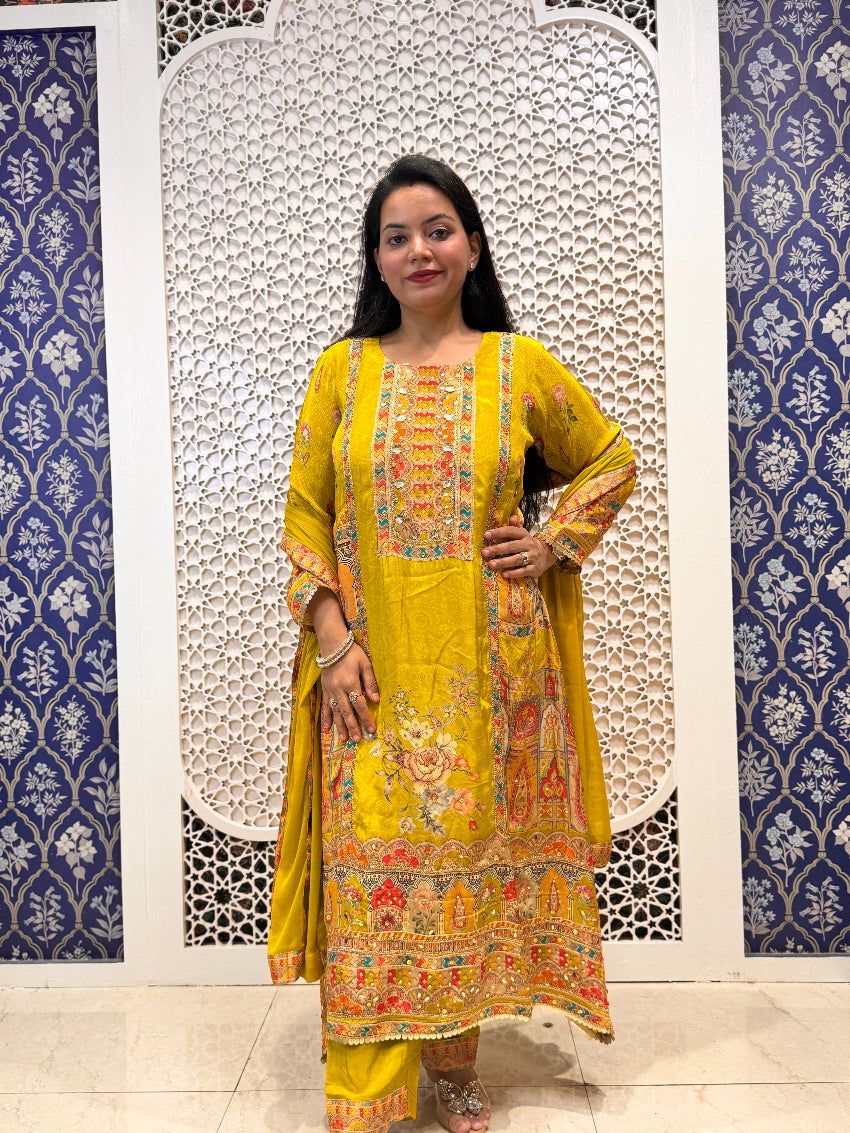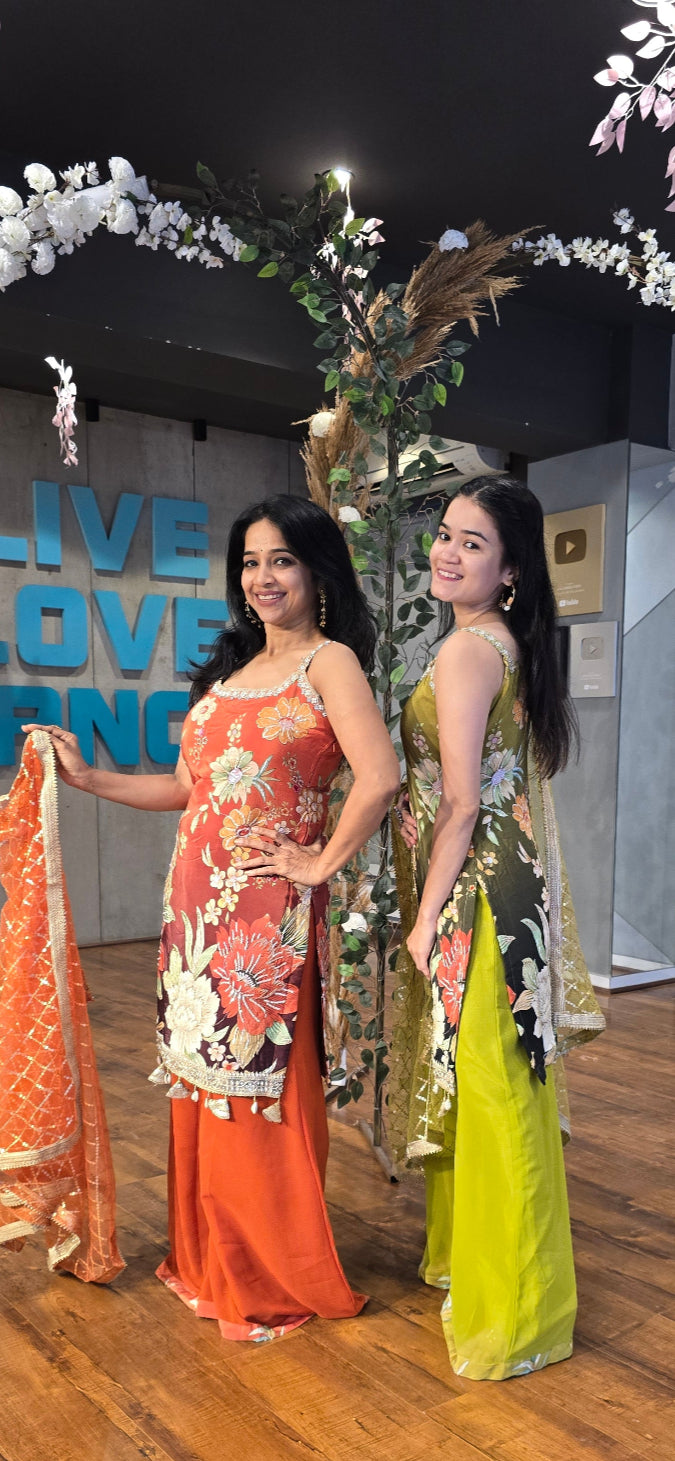Indian Clothes Price: 7 Tips to Score the Best Deals
Indian ethnic wear has long been celebrated for its intricate craftsmanship and cultural significance, making it a preferred choice for weddings, festivities, and everyday elegance. Yet, finding pieces that perfectly balance quality and affordability often poses a genuine challenge. With countless options available both online and in stores, understanding how the indian clothes price is determined and where smart savings lie can truly transform your shopping experience.
In this article, you’ll find seven practical tips designed to guide you through the process of scoring the best deals. Whether it’s comparing prices across platforms, taking advantage of seasonal discounts, or leveraging smart digital tools like price alerts and cashback offers, each strategy is aimed at empowering you to shop both wisely and confidently. Tips on evaluating customization costs, staying updated with market trends, and even negotiating in-store are all part of a comprehensive approach to help you make informed decisions without compromising on quality.
As you explore the insights shared here, you might also want to check out curated collections available at trusted retailers like DC Fashion, where authenticity meets exceptional service. Ready to discover how a strategic approach can ensure you get the best value on your next ethnic wear purchase?
Tip #1: Research and Compare Prices Online
One of the most effective ways to ensure you’re getting the right value for your money is by doing your homework. With the ever-growing number of online platforms and physical stores offering Indian ethnic wear, starting your journey with thorough research can save you both time and money. By comparing prices across various sources, you can be better informed about what constitutes a reasonable price for the designs and quality you seek.
Taking the time to compare multiple options not only reveals where the best deals lie but also helps in spotting any price discrepancies between retailers. Online research enables you to see how different brands, customizations, and fabric quality can affect the overall cost. With a clear picture of market trends, you’re less likely to overpay or fall for misleading discounts.
Key Price Comparison Strategies
When comparing prices, begin by establishing what similar items typically cost. Look for filters like “Under 10K” on your favorite e-commerce sites to narrow down your choices. This technique helps in setting a baseline price range for various types of ethnic wear—from casual kurtas to festive lehengas. It’s also useful to keep an eye on customer reviews and detailed product descriptions, as they provide insights into whether a lower price might compromise quality or design integrity.
In addition, utilizing a simple spreadsheet to note down prices across various retailers can further aid in identifying trends. Over time, this consistent approach can reveal which stores frequently offer competitive pricing as well as seasonal deals. Often, knowing the standard rate helps you seize genuine discounts without hesitation.
Useful Online Tools for Price Tracking
Several digital tools and apps have made the price comparison process seamless. Websites and applications dedicated to price tracking allow you to set alerts for specific items, ensuring you never miss out on a discount. While exploring current trends, resources like Statista provide valuable market data that can give you a better understanding of typical pricing ranges and market size for women’s traditional wear in India. Such insights empower you to gauge if the price you’re seeing is competitive.
By integrating these online tools into your shopping routine, you can stay proactive. Whether you’re planning a major purchase for a wedding or just updating your wardrobe for upcoming festivities, keeping track of price movements and comparing offers across platforms is a smart way to secure the best deals on high-quality ethnic wear.
Tip #2: Leverage Festive Sales and Off-Season Discounts
Indian celebrations not only bring family and friends together but also open up a plethora of opportunities to score attractive deals on ethnic wear. Major festivals, wedding seasons, and even the quiet off-peak periods can be the perfect time to purchase high-quality ethnic clothes at marked-down prices. Retailers often offer deep discounts during these periods to clear out stock or capitalize on the buying mood, making it a strategic moment for shoppers to revamp their wardrobe without stretching their budget.
Timing Your Purchase
Planning your purchase around prominent festivals such as Diwali, Navratri, or the wedding season can significantly reduce the cost of your favorite pieces. During these times, you’ll notice special promotions, limited-time offers, and exclusive collections that make it easier to access premium designs at more affordable rates. Insights from industry studies, like those highlighted in reports on the festive-driven Indian ethnic wear market, reinforce the fact that these seasons are ideal for making cost-effective purchases.
Off-Season Buying Advantages
Beyond festive peaks, off-season periods offer their own set of benefits. When demand slows down, retailers are often more willing to drop prices to clear unsold inventory, allowing you to buy quality items for much less. Stocking up during these quieter periods not only saves you money but also means you have those timeless pieces ready for the next special occasion. Keeping an eye on off-season sales and planning ahead ensures you’re never caught short when a special event calls for something new.
Tip #3: Utilize Price Alerts, Cashback Offers, and Coupons
In today’s digital shopping environment, leveraging technology can dramatically enhance your hunt for the best deals. By setting up price alerts, you ensure you’re instantly notified when there’s a drop on your desired items. In addition, cashback offers and coupons can further reduce the overall cost, making the purchase of high-quality ethnic wear even more affordable. These digital tools turn a passive shopping process into an active savings strategy, helping you stay ahead even when prices fluctuate.
Setting Up Price Alerts
Price alerts are an excellent way to monitor the fluctuation of prices on the items you’re interested in without having to check manually every day. Most e-commerce websites and dedicated tracking apps allow you to set up these alerts simply by adding your selected products to a watchlist or by signing up for notifications. Once activated, you receive automatic updates whenever there is a discount or special promotion available. This not only streamlines your shopping process but also eliminates the risk of missing out on a limited-time offer.
Maximizing Cashback and Coupon Savings
Another smart strategy is to capitalize on cashback websites and discount coupons. Many platforms offer cashback on purchases made through their links, and stacking these with exclusive coupon codes can lead to significant savings. It pays to subscribe to newsletters from both your preferred e-commerce sites and cashback portals, as they often send out early-bird notifications and special discounts. By combining these offers, you can lower your expenses without compromising on quality, ensuring that you get the best value for money every time you shop.
Utilizing these digital tools effectively will not only keep you informed about the latest price drops but also ensure that you take full advantage of every additional discount opportunity available in the market.
Tip #4: Buy from Trusted Retailers Offering Customization and Quality
When it comes to investing in ethnic wear, the source of purchase plays a crucial role. Established retailers often combine quality craftsmanship with a commitment to customer satisfaction, ensuring that you receive products that truly represent the rich heritage and intricate design details of Indian ethnic wear. Buying from a trusted seller not only guarantees the authenticity of the piece but also offers additional benefits such as customization and tailored after-sales services.
Taking the time to identify reputable retailers means you can enjoy the peace of mind that comes from knowing your purchase is backed by reliable customer support and genuine product quality. Moreover, many trusted brands also provide customization options—allowing you to adjust designs, choose specific fabrics, or even request bespoke tailoring—to ensure that your outfit perfectly fits your style and body type. Shopping from these reputable sources ensures that even a higher price reflects superior quality and long-lasting value.
Trusted Retailer Spotlight
Retailers with a longstanding reputation in Indian ethnic wear have built their brands on customer trust and high-quality offerings. For instance, DC Fashion is celebrated not only for its extensive collection of ethnic attire for both men and women but also for its commitment to customization. Their options range from minor alterations to completely personalized designs, providing a tailor-made experience that accommodates individual preferences and needs. Always look for verified customer reviews and testimonials when considering a retailer, as these insights can further affirm the quality and reliability of the service they provide.
Evaluating Retailer Credibility
Before making a purchase, it’s a good idea to gauge a retailer’s credibility. Check for clear and detailed product information, transparent pricing policies, and readily available after-sales support. Trusted retailers typically display their years of experience, customer ratings, and any awards or recognitions they have received. In addition, look for highlights like “Editor's Picks” or “Bestsellers” sections, which help you quickly identify popular and reliable products. Doing your homework in this way enables you to invest wisely, ensuring that the premium you pay also secures a product that will stand the test of time while offering customization options that add value to your purchase.
Taking these steps means you not only buy with confidence but also enjoy a seamless, personalized shopping experience—making every rupee count when it comes to managing your indian clothes price and ensuring lasting satisfaction.
Tip #5: Understand Customization, Quality, and Tailoring Costs
When shopping for Indian ethnic wear, it’s important to remember that the sticker price may only be part of the total cost. Many pieces require additional investments in tailoring and customization to achieve that perfect fit and exquisite finish. Knowing how to break down these extra expenses can help you decide whether paying more upfront is truly worthwhile.
Before making a purchase, consider that customization charges often cover minor alterations, such as adjusting hemlines or taking in seams, as well as more significant details like fabric quality upgrades, hand embroidery, or bespoke embellishments. It’s not uncommon for these additional services to add a noticeable premium to the overall price of the garment.
Decoding Customization Charges
Customization fees can vary widely depending on the type of alteration and the complexity of the design. For example, simple adjustments might come with a small tailor’s fee, while intricate personalization or the use of premium fabrics can drive costs higher. To avoid surprises, always ask for a clear breakdown of charges before finalizing your order. Over time, you’ll build a sense of what’s standard in the market and what represents a true value-add.
Value vs. Cost Analysis
When evaluating whether to pay extra for customization and quality enhancements, consider the long-term benefits. Investment in personalization often means that the final product will last longer, fit better, and become a cherished piece in your wardrobe. Compare the additional cost to potential savings from reduced returns or alterations later on. If the premium leads to a garment that truly complements your style and body, then the extra expense is often justified.
Taking the time to understand and analyze these aspects ensures that you’re not just buying a piece of clothing, but also investing in enduring quality and a perfect fit—ultimately making every rupee count.
Tip #6: Stay Updated with Market Trends and Price Movements
Keeping an eye on market trends is essential to understanding the fluctuations in the indian clothes price. Savvy shoppers know that being informed about demand, supply, and seasonal variations can help you strike when the iron is hot. Regularly checking market news, industry reports, and social media discussions offers an invaluable perspective on pricing dynamics that often go unnoticed by those in the midst of a shopping spree.
By monitoring market data, you can detect patterns and anticipate price drops before they hit. For instance, if you notice an increase in supply due to a new collection launch or a dip during off-peak periods, you’re likely to spot significant discounts. Resources such as Blinkx provide insights on how retailers plan their inventory and pricing strategies, which can help you time your purchases more effectively.
Analyzing Market Data
Tracking numerical trends and consumer behavior not only highlights the current demand but also provides clues on future price movements. Analyze data points like average selling prices during festival periods versus off-season months. This approach can empower you to predict when prices might reach a baseline, ensuring that you are ready with your purchasing strategy when a viable deal surfaces.
Global and Local Demand Influences
Market trends are not just shaped by local events; global interest in Indian ethnic wear also plays a significant role. With increasing demand from international markets, price fluctuations can sometimes be influenced by factors outside of local festivities. For example, insights from Godfather Style reveal that rising global popularity often prompts domestic sellers to adjust prices to meet both local and international demand. Keeping abreast of such trends can provide you with an edge when deciding the right moment to make a purchase.
Staying updated with the ever-changing market scenario ensures that you are not only reactive but also proactive. By integrating these strategies into your shopping habits, you can make decisions that truly reflect the best possible value for your money when investing in premium Indian ethnic wear.
Tip #7: Negotiate, Look for Bundle Offers, and Loyalty Benefits
When shopping for Indian ethnic wear, don’t hesitate to negotiate and explore every opportunity to maximize your savings. Whether you’re at a local boutique or browsing online, asking about additional discounts or discount options available during checkout can often lead to unexpected savings. A little politeness and persistence can go a long way, especially in brick-and-mortar stores where prices may be flexible. Even in an online setting, some retailers offer room for negotiation through live chats or special discount events, so it’s always worth inquiring if additional markdowns might apply, particularly if you're planning to buy multiple pieces at once.
Negotiation Tactics
Effective buying often involves a bit of negotiation. When you visit a store, it helps to do your research beforehand so that you know the average prices for similar items. With that knowledge in hand, you can confidently ask for a better deal or inquire if the retailer can offer a discount on additional items. For example, if you’re purchasing a complete outfit or several complementary pieces, mentioning that you’re ready to buy on the spot may convince the seller to adjust the price. On the online front, look out for chat support or customer service options where you might be able to discuss any ongoing promotions or loyalty incentives.
Exploring Bundle and Loyalty Offers
Bundle deals are another excellent way to reduce the overall cost of your ethnic wardrobe. Many retailers offer special bundle offers when you buy multiple items—such as a matching set of kurtas and dupattas or coordinated ensembles that are perfect for wedding or festive seasons. These bundles often come at a combined price that is lower than buying each item separately. Additionally, signing up for loyalty programs or membership benefits can provide continuous perks like early access to sales, exclusive coupon codes, or even extra cashback on your purchases. Always check if a retailer has a loyalty initiative; these programs often reward repeat customers with incentives that make every rupee count in terms of both quality and affordability.
Taking the step to negotiate, ask for bundle offers, and join loyalty programs ensures that you don’t just settle for the sticker price. Instead, you actively transform your shopping experience into one that’s both rewarding and budget-friendly, ultimately helping you secure the best possible deal on your next favorite piece of Indian ethnic wear.
Understanding the Pricing Dynamics of Indian Ethnic Wear
The price of Indian ethnic wear is influenced by a mix of internal and external factors. From the quality of raw materials to the intricacy of design details and the cost of customization, every element plays a role in determining the final price you pay. Understanding these components can help you assess whether a particular deal is truly competitive and fair.
Factors Affecting Price
Several aspects contribute to the pricing of ethnic garments. Firstly, the quality of raw materials—such as handwoven fabrics, premium silks, and artisanal embellishments—often drives up costs. Moreover, traditional techniques like intricate embroidery, hand block printing, and mirror work, all add labor-intensive value to the final product. Manufacturing costs, including labor charges and technology investments, also factor in, especially for brands that maintain high-quality standards.
Customization further complicates the pricing structure. Whether it’s simple alterations for a better fit or more elaborate personalization, additional tailoring fees and fabric quality premiums can increase the overall cost. Insights from industry reports, such as those found on India Retailing, highlight that these variables are pivotal in determining product value in a competitive market.
Market Performance and Growth Trends
The broader market dynamics also play a significant role in shaping pricing trends. For instance, data from Statista shows that the market size for women’s traditional wear in India has been steadily growing, reflecting increasing consumer demand. During peak periods like festive seasons or wedding months, prices are typically higher due to increased demand and limited availability of premium designs.
Conversely, during off-peak times, retailers may lower prices as they clear out inventory, offering more attractive deals to shoppers. Global interest in Indian ethnic wear has further amplified this effect, with international demand sometimes prompting domestic sellers to adjust their pricing strategies. This interplay between local and global trends means that staying updated with market movements is crucial for making informed purchasing decisions.
Overall, a clear understanding of these pricing dynamics empowers you to evaluate whether a given price—after accounting for quality, design, and customization—is justified. It also reinforces the notion that a higher price tag can often be an investment in craftsmanship and longevity, rather than merely an expense.
Consumer Rights and Pricing Transparency in India
Understanding your rights as a consumer is a critical part of making informed purchasing decisions, especially when it comes to Indian ethnic wear where quality and value are paramount. The legal framework in India mandates transparency from retailers when it comes to pricing, ensuring that any hidden charges or unclear markups are brought to light. This transparency not only builds trust but also empowers you to demand fair treatment during your shopping experience.
Ensuring Fair Pricing Practices
Under the Consumer Protection Act, 2019, you are entitled to clear and understandable pricing information at the time of sale. Retailers are required to disclose all aspects of pricing so that you can accurately compare products and determine whether a deal is truly as attractive as it seems. When shopping, especially in a market as dynamic as ethnic wear, it is important to check that the price tag reflects all necessary costs—including taxes, customization fees, and any additional charges for tailoring. This practice helps in avoiding any unpleasant surprises at checkout and ensures that the price you pay is comprehensive and justified.
Dispute Resolution and Your Rights
If you ever encounter practices that seem unfair or unclear, remember that you have the right to seek redress. Consumers in India can address grievances related to pricing discrepancies through established channels such as consumer courts and the National Consumer Helpline. For instance, if a retailer fails to disclose certain charges or you feel misled by a pricing tactic, you can escalate the matter with the National Consumer Helpline which provides a straightforward process for dispute resolution. This mechanism is designed to ensure that all consumers receive fair treatment and that any instances of pricing opacity or malpractice are swiftly resolved.
Armed with a knowledge of your consumer rights and pricing transparency standards, you can approach every transaction with confidence. By insisting on clear pricing information and knowing where to turn if something isn’t right, you’re not only safeguarding your own interests but also contributing to a marketplace where transparency is the rule rather than the exception.
Tools and Resources to Monitor Indian Clothes Prices
Staying on top of price fluctuations in the Indian ethnic wear market is crucial for making informed purchasing decisions. Today’s digital landscape offers a plethora of tools that not only simplify price tracking but also provide deeper insights into market trends. Whether you’re a regular shopper or a savvy investor in your wardrobe, leveraging these resources can ensure that you’re always in the know about the best deals available.
By integrating online price comparison tools and industry reports into your shopping routine, you can monitor price movements in real time and plan your purchases when the market is most favourable. These platforms allow you to set up alerts, compare prices across retailers, and even see historical pricing data, making sure that you never miss out on an opportunity to save.
Online Price Comparison Tools
Numerous websites and apps have made it easier than ever to compare prices for ethnic wear across multiple platforms. Tools like MySmartPrice, PriceDekho, and similar price aggregator sites offer real-time updates on product prices, special discounts, and flash sales. These platforms allow you to filter options based on your budget—such as “Under 10K”—and provide intuitive interfaces to track the price history of your favorite Indian ethnic garments. By setting up personalized alerts, you can ensure that when your desired item drops in price, you’re immediately notified, helping you secure the best possible deal.
Industry Reports and Market Analysis
In addition to price comparison tools, industry reports and market analysis are invaluable resources for understanding the broader pricing dynamics within the ethnic wear market. Websites such as IBEF offer detailed reports and forecasts that highlight growth trends in India’s textile and ethnic wear sector. Furthermore, insights from platforms like India Retailing and the Economic Times provide nuanced analyses of demand patterns, seasonal price variations, and the impact of global trends on local pricing. These resources collectively empower you with the market data needed to plan your shopping strategy and understand whether a particular deal is truly advantageous.
Using a combination of these online tools and in-depth market analyses, you can transform your shopping experience—ensuring every rupee spent on Indian ethnic wear is an investment in quality and style.
Final Thoughts
Navigating the dynamic world of Indian ethnic wear doesn’t have to be overwhelming. By researching and comparing prices, timing your purchases around festive and off-season periods, and fully taking advantage of digital tools like price alerts and cashback offers, you can significantly reduce the overall cost of your wardrobe updates. Each of the seven tips discussed here—from understanding the value of customization and quality, to staying informed about market trends and even negotiating in-store—plays a unique role in helping you secure the best value on your chosen pieces.
Strategic shopping means not only finding lower prices but also ensuring that every rupee spent reflects an investment in quality, authenticity, and style. When you prioritize reputable retailers and leverage loyalty programs and bundle offers, you ensure that your purchase is not only economically smart but also rich in craftsmanship and enduring design.
Ready to start your journey toward maintaining a stylish, budget-friendly ethnic wardrobe? Visit DC Fashion for a curated collection that exemplifies quality, thoughtful customization, and competitive offers. With the right information at your fingertips and a strategic mindset, you can master the art of balancing tradition with value—making every shopping experience both delightful and rewarding.






0 comments